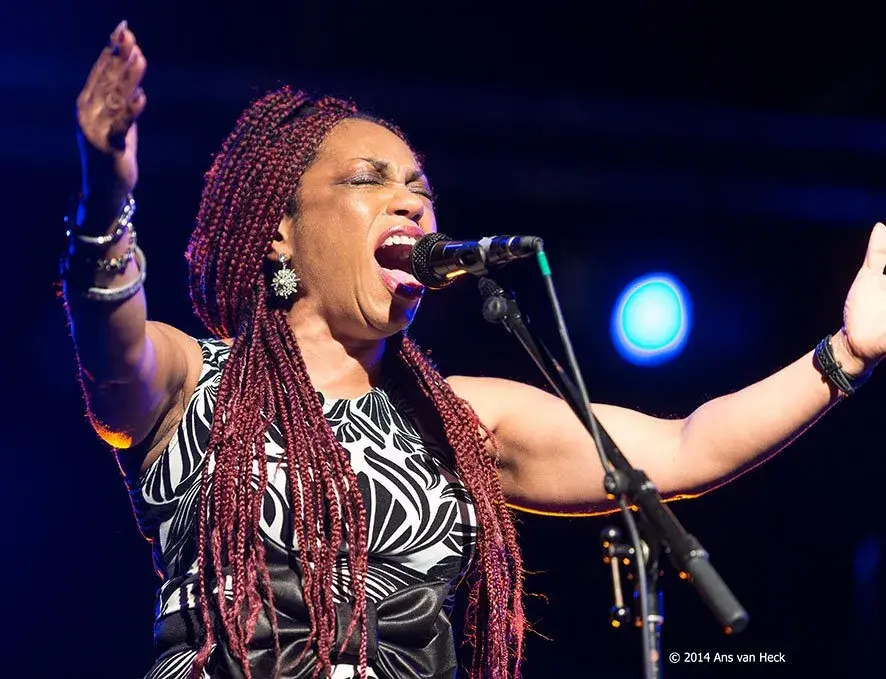Jamica Zion - it's not just about dancing
- Adamo Ciarallo
- Jun 19
- 4 min read
Updated: Jun 20

Introduction
Jamica hails from Denver, Colorado, surrounded by the majestic Rocky Mountains. Her journey into dance began at 15 when friends introduced her to Lindy Hop, igniting a passion for partner dancing. Shortly after, she delved into blues, intrigued by its depth and connection.
Navigating what she calls the "dark days" of blues dancing, Jamica encountered a scene where authentic blues music was rare. Undeterred, she embarked on a personal exploration, seeking out genuine blues amidst contemporary influences. Through perseverance, she honed her skills, embracing the authenticity and beauty of blues dancing.
Do you have people who have influenced and informed your dancing?
Definitely. Inside the blues scene, Damon Stone has been a significant influence, along with others like Kenneth Ship and Julie Brown. Outside the scene, I draw inspiration from various black musicians, dancers, and entertainers, as well as through my own research. Before connecting with teachers like Damon Stone, I took it upon myself to explore the history and culture, as these aspects weren't widely discussed at the time.
What cultural elements do you consider essential in this art form, now played all over the world?
Well, there are several key elements. Firstly, personal and emotional expression is crucial. It's disheartening to see dancers solely focused on perfecting steps rather than allowing their emotions to shine through. This hampers both personal expression and innovation within the dance. Additionally, understanding the historical and cultural context of blues is vital. Many approach it superficially, missing its significance and failing to acknowledge the risks black people took in creating these spaces. For me, as a black American dancing in global spaces, it's challenging to feel fully recognized and respected. There's often a sense of tokenization rather than genuine appreciation for our contributions. It's essential for dancers, educators, and performers to grasp the full scope of blues history and its connection to black experiences to truly honour this art form.
What steps do you think organizers, especially those from dominant cultures like white Europeans, can take to ensure everyone feels safe, recognized, and comfortable expressing themselves?
Hiring a more diverse team across all aspects of the event is a practical step forward. This means representation not just in teaching or performing roles but also in organizing and decision-making positions. Embracing intersectionality is key; it's about recognizing and celebrating the diversity within marginalized groups, whether that's black queer individuals, black fat individuals, disabled people, or others. It's a nuanced process of reflection and intentional inclusion. While access issues persist, it's important to actively address them rather than ignore the problem. Progress may be gradual, but the commitment to inclusivity can lead to significant positive change over time.
You've mentioned personal expression as a significant value in yours. Could you elaborate on other important values?
Certainly. One crucial value for me is recognizing the dance space as a holistic ecosystem. It's about understanding that everyone present contributes to the dynamic, whether they're dancing or not. This means being mindful of those sitting out, who may have various reasons for not participating, such as injury or being new to the scene. It means bridging the gap between musicians and dancers and being inclusive to waitstaff and others. It's about fostering a sense of community where everyone feels safe, supported, and connected. Practicing good floor craft, being aware of others on the dance floor, and prioritizing the collective experience over individual desires are all part of this value. Back in the day, the places where Black Americans danced also often had food, drink, and games (including gambling). Most dance nights I've been to around the world don't have these options, or only a bar is available. Additionally, these spaces often served multiple purposes including fundraising for members of the community that needed money to pay rent, support education, or get a loved one out of jail. It's about creating an inclusive and supportive environment where everyone's well-being is considered, not just your dance partner for the moment. This perspective encourages a deeper engagement with the social dynamics of the dance space, promoting empathy, respect, and a stronger sense of belonging for all participants.
Can you elaborate on some specific areas that need more attention?
Absolutely. Again, one critical aspect is recognizing the dance space as more than just a venue for fun. Often, the desire for enjoyment overshadows discussions on topics perceived as political. The reality is that we need to address the social and political implications of engaging with Black American dances. It's not enough to simply enjoy the music and movements; we must also confront the historical and contemporary realities faced by Black communities. This includes amplifying Black voices within the dance community, supporting initiatives that promote racial equity, and actively challenging instances of anti-Blackness both on and off the dance floor.
These conversations may be uncomfortable, and they may require us to confront our own privilege and biases. However, they're crucial for fostering a more socially conscious and empathetic dance community. It's time for us to move beyond surface-level discussions and engage in meaningful dialogue that drives positive action and creates a more inclusive and equitable dance world for all.





Comments